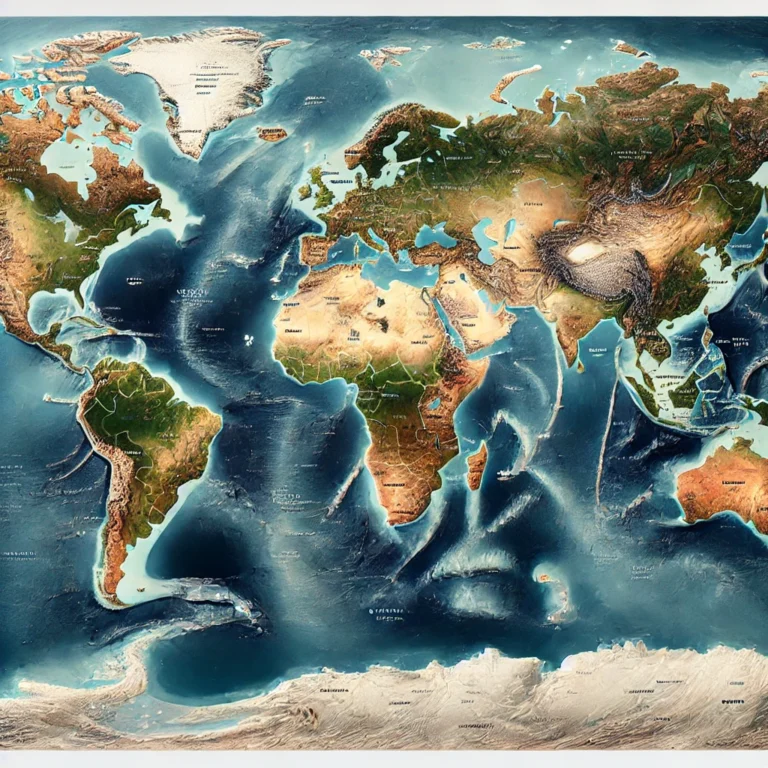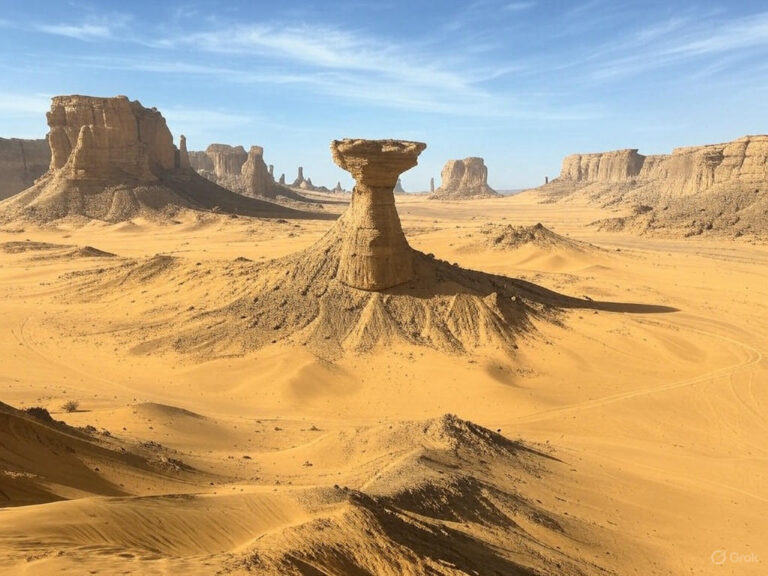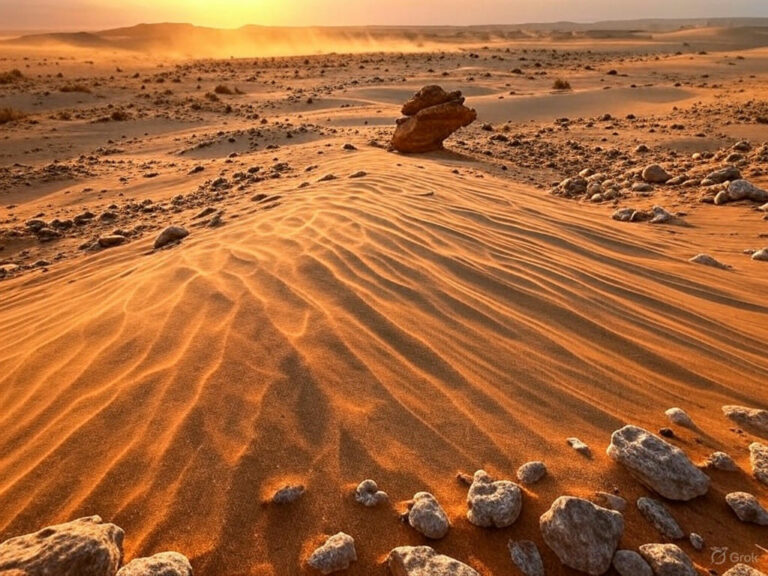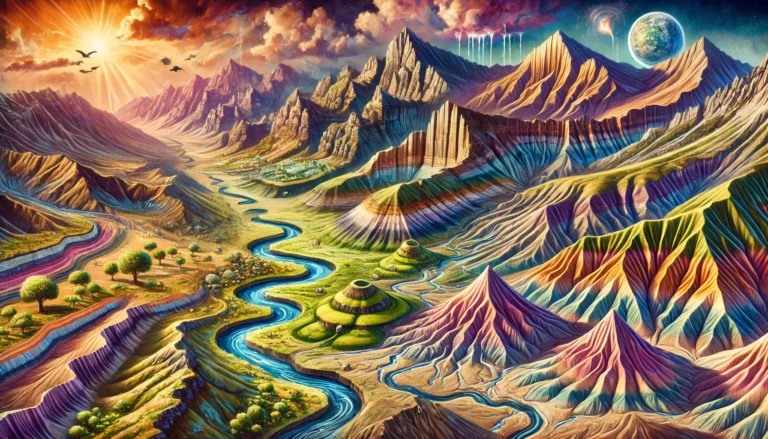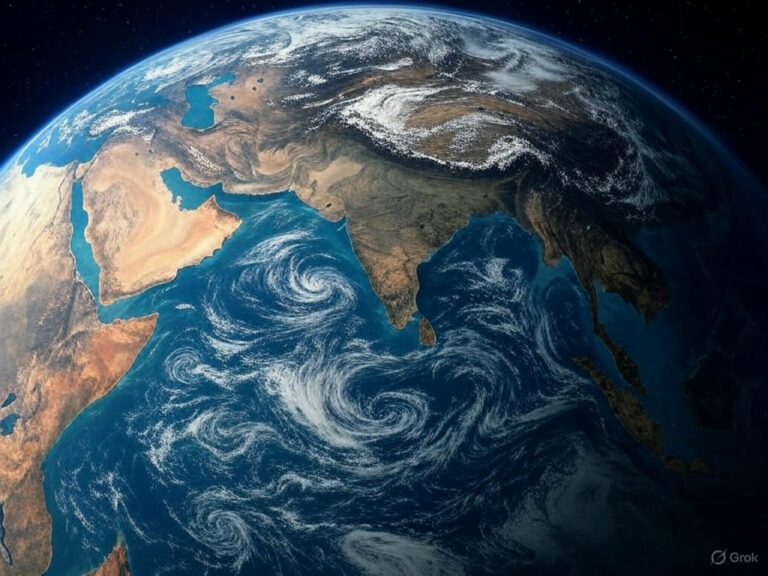Arid Cycle of Erosion
In 1905, W.M. Davis introduced the concept of the Arid Cycle of Erosion, which explains how desert landscapes gradually change over time due to erosion and deposition. However, this concept applies only to mountain deserts (like the Thar Desert) and not to low-level open deserts. The cycle passes through four stages — Initial, Youth, Maturity, and Old Age — each transforming the landscape differently.
Initial Stage: The Birth of a Desert Landscape
💭 What happens in the beginning?
- The desert region experiences upliftment of land due to folding or faulting, resulting in the formation of mountains and intermontane basins (low-lying areas between mountains).
- Drainage patterns are formed within these basins, but they remain isolated with no connection to other basins. This is called inland drainage or centripetal drainage (where water flows towards the center of the basin).
- As the climate is extremely dry, evaporation is rapid, leaving behind salty, dry lake beds called Playas.
- Erosion begins in the mountains, and sedimentation starts filling up the basins. This marks the beginning of the erosion cycle.
👉 Key Features of Initial Stage:
- Uplifted mountains and isolated intermontane basins.
- No drainage communication between basins.
- Formation of Playas (dry lake beds) due to water accumulation and evaporation.
- Erosion of mountains and deposition in basins.
Youth Stage: Active Erosion and Sedimentation
💭 What happens as the landscape matures?
- Both erosion and deposition occur simultaneously.
- Mountains start degrading as their slopes get eroded. This is known as backwasting (horizontal erosion) and downwasting (vertical erosion).
- At the margins of basins, Alluvial Fans (cone-shaped deposits of sediments) start forming due to water flow from mountain slopes.
- Over time, several alluvial fans merge, forming Bajadas (extensive apron-like sediment deposits at mountain foothills).
- Some Playa Lakes (temporary water bodies in the basin) also appear after occasional rain.
- Small sand dunes may form along the Playa margins due to wind deposition.
👉 Key Features of Youth Stage:
- Narrowing and lowering of water divides.
- Formation of Alluvial Fans and coalesced Bajadas.
- Formation of Playa Lakes.
- Increase in sediment deposition in basins.
Maturity Stage: Landscape Integration and Reduction of Relief
💭 What happens as erosion progresses?
- Mountains start shrinking rapidly due to continued erosion.
- The water divides (mountain barriers) begin to recede and breach, allowing water from one basin to flow into another, resulting in the integration of drainage systems.
- This causes the lower basins to collect water from higher basins, making them larger and more connected.
- The space between mountain fronts and Bajadas now becomes rock-cut pediments (gently sloping rocky surfaces).
- Gradual deflation (wind erosion) leads to the creation of desert pavements (bare rocky surfaces with little or no sand).
👉 Key Features of Maturity Stage:
- Rapid reduction in mountain height.
- Integration of basins and drainage systems.
- Expansion of Bajadas and formation of Pediments.
- Formation of desert pavements due to wind erosion.
4. Old Stage: Flattening of the Landscape
💭 What happens in the final stage?
- Almost all highlands (mountains) are reduced to low hills or rocky islands called Inselbergs or Bornhardts. These isolated hills look like islands in a vast plain desert.
- Extensive erosion results in the coalescence of Pediments, forming large Pediplains (gently sloping flat surfaces formed by erosion).
- Deflation (wind erosion) is at its peak, causing further stripping of fine sand particles, leaving behind bare rocky surfaces.
- The desert now looks almost flat with a few isolated hills (Inselbergs).
👉 Key Features of Old Stage:
- Formation of Inselbergs (residual hills).
- Extensive Pediplains due to merged pediments.
- Highly active wind erosion (deflation).
- Almost flat desert surface with very low elevation.
✅ Quick Recap of the Arid Cycle of Erosion

💡 Final Thought
The Arid Cycle of Erosion beautifully explains how desert landscapes evolve over time. What begins as uplifted mountains with isolated basins eventually transforms into a flat desert plain with a few leftover rocky hills (Inselbergs). The role of wind, water erosion, and sedimentation constantly shapes and reshapes the desert landscape until it reaches its ultimate flattened stage.


